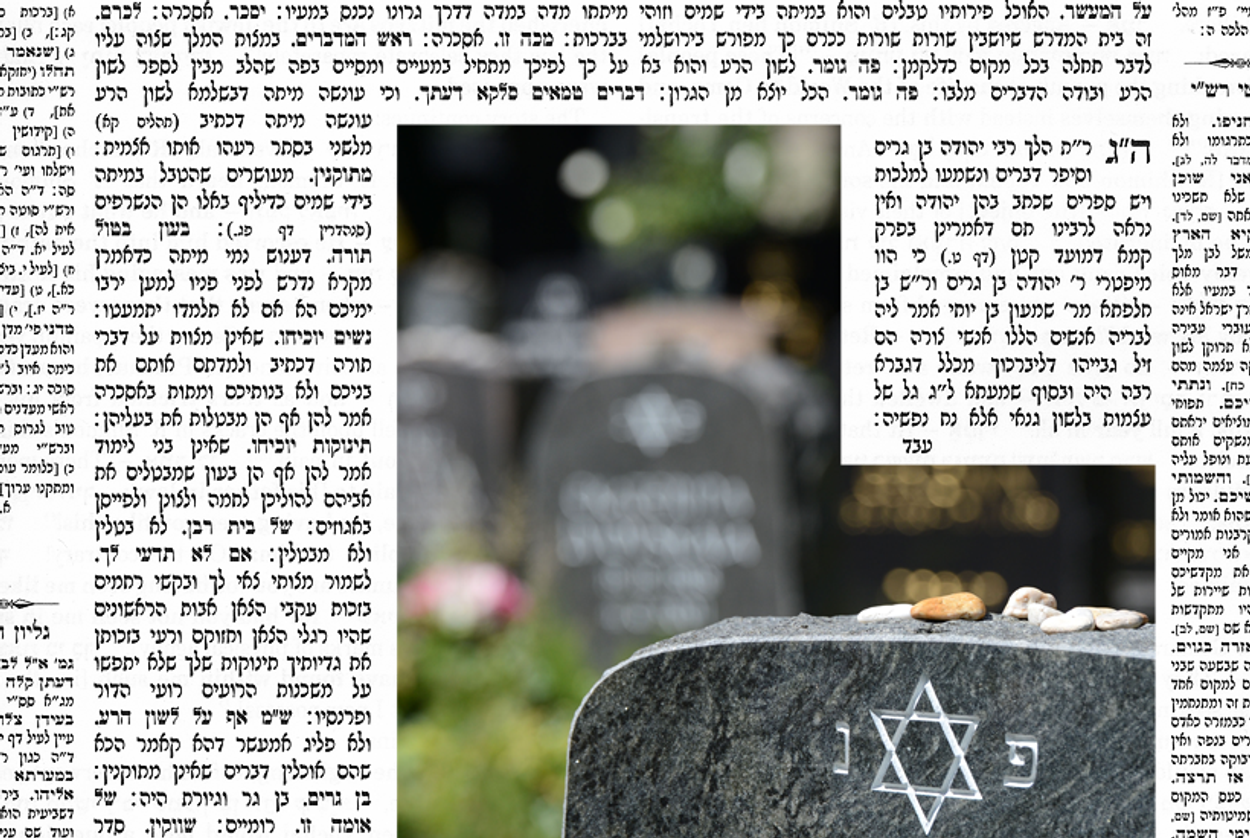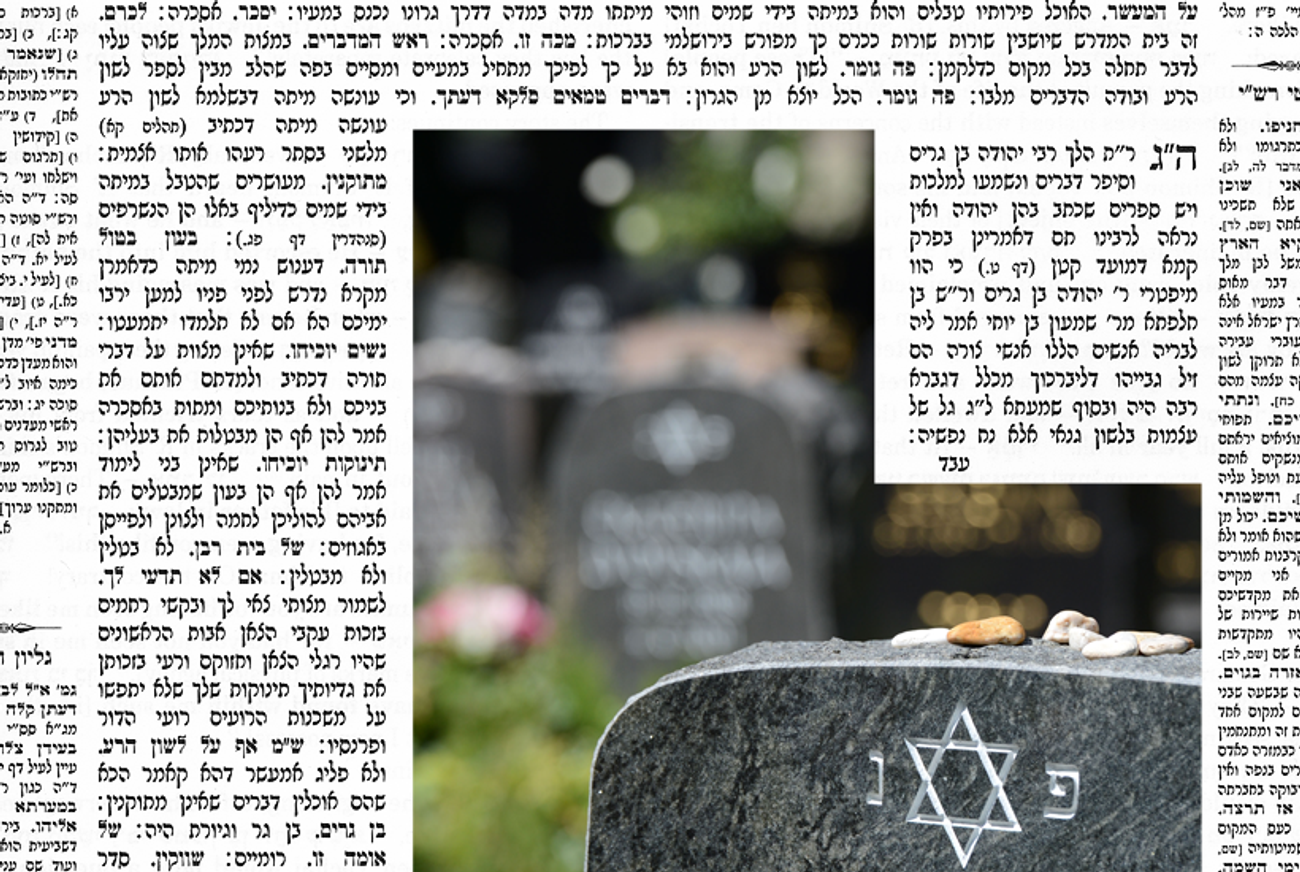In the Days Between the Major Holidays, Little Clues to Jewish Ritual and Life
Talmudic rabbis debate professional eulogizers, trying to strike a balance between the holy and the mundane




Literary critic Adam Kirsch is reading a page of Talmud a day, along with Jews around the world.
Tractate Moed Katan, which Daf Yomi readers continued to explore this week, is not one of the more glamorous parts of the Talmud. Where other tractates we have read in Seder Moed dealt with major holidays like Yom Kippur or Pesach, Moed Katan focuses on the middle days of the festivals, which are inherently less dramatic and important than the first and last days. The result, however, is that this tractate offers an unusually close look at the day-to-day life and work of Talmudic-era Jewish society. As the rabbis examine different occupations and activities, to decide whether or not they can be pursued on the intermediate days, they indirectly offer a kind of sociological overview, covering everything from burial rites to bed-making to beautification.
In Moed Katan 8a, for instance, we read about a vanished Jewish occupation—the professional eulogizer. The mishna holds that, during the 30 days before a major festival, it is forbidden to eulogize a dead relative. Why such a long period? The obvious answer, which the Talmud duly gives, is that eulogies induce grief, and the rabbis fear that a mourner’s grief will last so long that it will prevent him from feeling the appropriate joy when the festival arrives. Better not to hear a speech about a dead relative at all than to grieve excessively.
But there is also another explanation, which could never be guessed unless you knew about the practice of professional eulogizing. “In the West,” Rav explains—using the term the Babylonian Amoraim applied to the Land of Israel—the custom was for trained speech-makers to circulate in the towns, offering to make orations about the recently dead so that anyone in mourning could grieve: “They would say: let all those of bitter heart weep with him.” They were a kind of catharsis-vendor, and evidently they charged a sizable fee for this service.
For it once happened, Rav recounted, that a man had saved up a lot of money to pay for his pilgrimage to Jerusalem on an upcoming festival. But “a professional eulogizer came and stood at the opening of his house and the man’s wife took the money and gave it to him for his services.” As a result, the man couldn’t afford to make his pilgrimage. It was for this reason, then, that the rabbis instituted the ban on eulogies during the 30 days before a festival: not because of grief per se, but because they feared the mourners would spend all their money on professional eulogies.
It must be admitted that this explanation doesn’t make very much sense—by the same logic, the rabbis should have banned all commercial transactions in the 30-day period, since presumably one could waste all one’s pilgrimage money on any kind of purchase. But the anecdote does give us a glimpse of a part of Jewish life. Similarly, the mishna explains that on an intermediate festival day, “a person may gather the bones of his father and mother.” This shows us that, in Talmudic times, the dead were interred twice: They would be buried in a grave until their flesh decomposed, then the bones would be dug up and reinterred in a family crypt. The rabbis differ as to whether this was a joyous occasion or, as we might rather expect, a mournful one.
These examples suggest that one must not mourn excessively on a festival day. But the Talmud goes on to say that one must not rejoice excessively either. That is why “One may not marry a woman on the intermediate days of a festival,” no matter whether the bride is a virgin or a widow. The Gemara queries this point: If the festival is a day for celebration, why can’t we add to the celebration by getting married? “And if it is a joy for him, what of it?” Rabba bar Rav Huna explains: “It is because he forsakes the rejoicing of the pilgrimage festival and occupies himself with rejoicing with his wife.” The marriage celebration competes with the holiday for the married couple’s attention, and the Talmud doesn’t want them to be happy for the wrong reason. The Gemara points to a verse from Deuteronomy that instructs, “And you shall rejoice in your festival”—“in your festival and not in your wife,” the rabbis emphasize.
Rabbi Yitzhak Nappacha, however, has a different, more cynical explanation. A wedding is expensive and time-consuming, and so is a festival. If it were permitted to get married on a festival, then, Jews would be tempted to combine the two events so as to save time and money by holding a single celebration for both. And this could lead the bride and groom to deliberately postpone their marriage until the next festival comes around, which would mean a delay in having children. Since the Torah commands us to “be fruitful and multiply,” however, such a delay would be a sin; and so, to prevent it, the rabbis forbid Jews to get married on a festival in the first place.
The same mishna instructs that women may put on cosmetics and beautify themselves on the intermediate days of a festival. Specifically, “she may paint her eyelids, she may remove unwanted hair, and she may put rouge on her face”; a woman may also groom her pubic hair, which the Talmud euphemizes as “pass[ing] a comb over her lower face.” This is just the latest of several instances I can remember of Talmudic indulgence toward the use of cosmetics, which it seems to regard as a kind of natural right of women. Indeed, Rav Chisda emphasizes that this right is enjoyed not just by girls—who might be concerned about attracting a husband—but by women of all ages: “Even your mother, and even your mother’s mother, and even a woman so old that she is standing at the edge of her grave” are permitted to use make-up. For as a popular saying has it, “A woman of 60 years, like one of 6, runs at the sound of the timbrel”: that is, as the Koren Talmud paraphrases, “women of all ages are young in spirit,” and all take pleasure in adorning themselves.
The Talmud goes on to examine a number of crafts and professions, in order to decide how far they can be pursued on holidays. In general, the principle here is that while a layman can perform basic repairs—mending clothes, weaving cords for a mattress—a professional craftsman cannot perform more advanced labor. Likewise, as we saw in last week’s reading, a person can perform work in order to avoid a financial loss, but not in order to earn a profit. In chapter 2 of Tractate Moed Katan, the rabbis go more deeply into this matter. Say, for instance, that you began the process of pressing olives for oil, and then a relative died and you went into mourning, so that you couldn’t complete the task. Could you then resume the pressing on the intermediate days of a festival? Rabbi Yehuda says no—you would have to leave things until after the festival ended—but Rabbi Yosei gives permission, to avoid a financial loss.
In general, too, one may not do business during a festival. But in Moed Katan 13a, the rabbis make an exception for transactions that are essential for one’s livelihood. If you need money urgently to avoid going hungry, you can sell merchandise even on intermediate festival days. Likewise, Rav Nachman believes that it is permitted to hire a laborer to work on those days, if he needs the wages to live on. As always, the rabbis are concerned to balance the sanctity of the holiday with the needs of the people and not to make laws that interfere with life.
To read Tablet’s complete archive of Daf Yomi Talmud study, click here.
Adam Kirsch is a poet and literary critic, whose books include The People and the Books: 18 Classics of Jewish Literature.